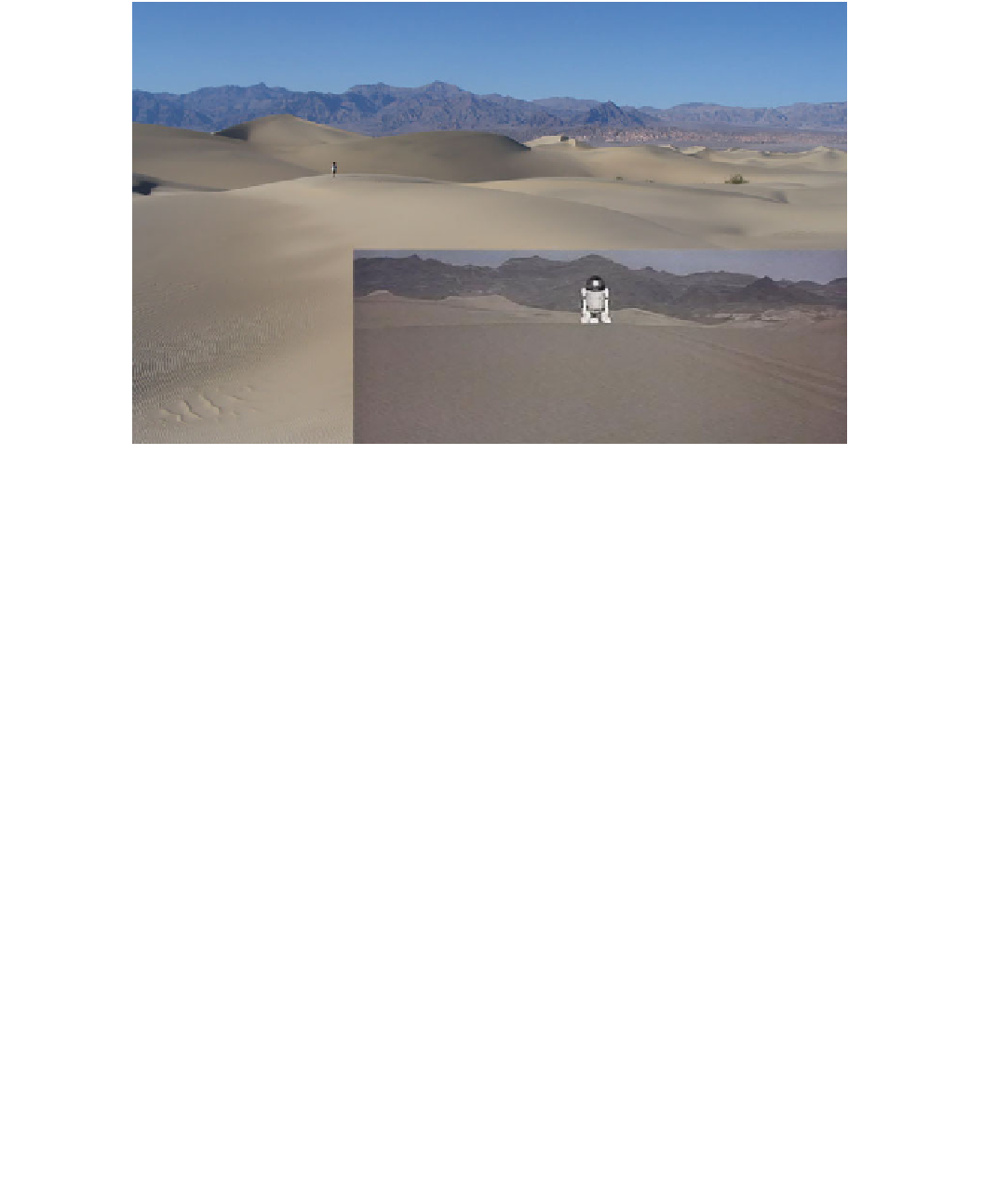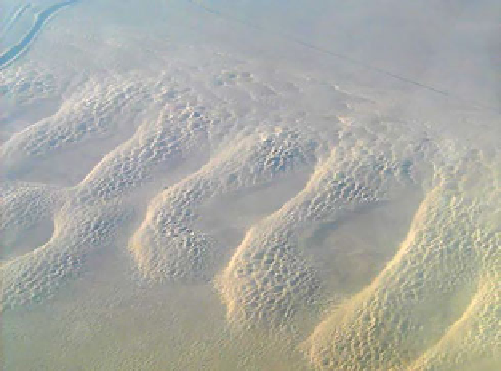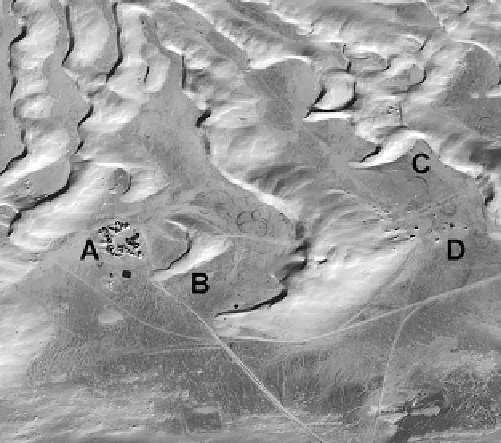Geoscience Reference
In-Depth Information
Fig. 24.2
The dunes at Stovepipe Wells in Death Valley National
Park are generally star-shaped. Some are rather rounded, while others
have well-developed slip faces. Note the ripples in the foreground.
Looking east, the mountaintop skyline in the left half of the image can
be matched with a screenshot from 'Star Wars' (inset). We might
observe that the small footprint of R2D2's wheels is a rather
dunes themselves have, of course, changed between this 2008 photo
and the 1977 movie. Photo R. Lorenz
Fig. 24.3
The Algodones Dunes between Yuma and El Centro at the
California/Arizona and US/Mexico border, seen from a commercial
flight to Hollywood's Burbank airport. Part of the Algodones are
administered as the Imperial Sand Dunes National Recreation Area,
and are also sometimes referred to as the Glamis dunes: before the
expanse of agriculture in this area (at upper right is a canal) this
dunefield was merely an extension of the Gran Desierto de Altar to the
south. Note the superposed duneforms: the emergence of this pattern is
discussed by Derickson et al. (2008). A faint reflection in the window
is apparent at mid-right, a common challenge in airliner photos-of-
opportunity. A space station view of these dunes is given in Fig.
7.17
and a radar image in Fig.
18.18
. Photo R. Lorenz
Fig. 24.4
Commercial satellite image acquired in 2004 of the Chott
El Gharsa area in Tunisia, showing (A) the Mos Espa film set covering
about a hectare and (B) the menacing barchan, still some *100 m
away. Vehicle tracks (including circular segments) are evident on the
interdune pan, as well as over the dunes themselves. Also indicated are
the small Repro Haddada set (C) seen in Fig.
24.5
and several
yardangs (D). Quickbird satellite image courtesy of Nabil Gasmi
Most Episode IV scenes are on strikingly flat plains, but
large tracked vehicles (the Jawa sandcrawler) merit dis-
cussion. These used giant treads, and were apparently
inspired by NASA's mobile launch platform used for the
its first major rainstorm in 50 years. Filming near Tozeur of
scenes in both Episode IV and Episode I 22 years later was
disrupted by a sandstorm.



Search WWH ::

Custom Search